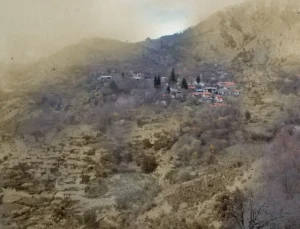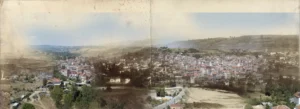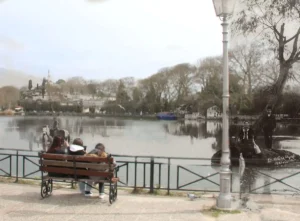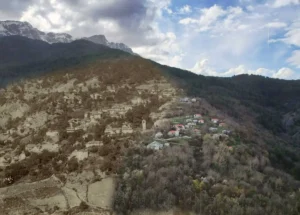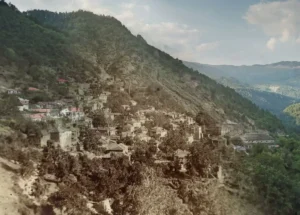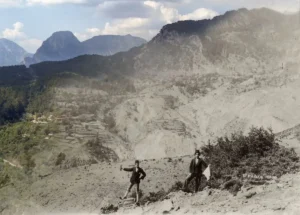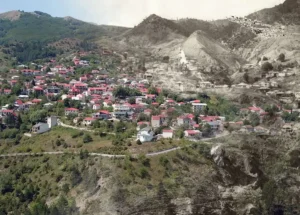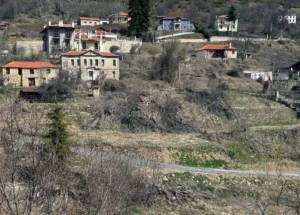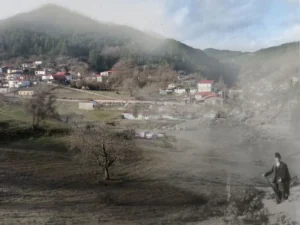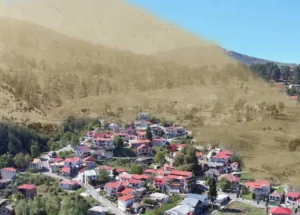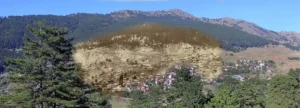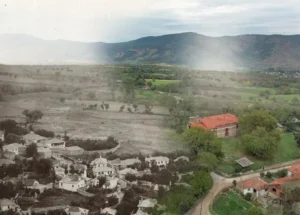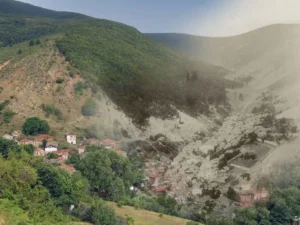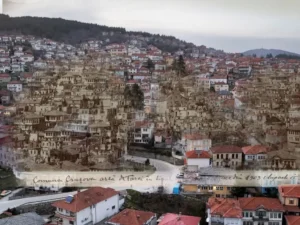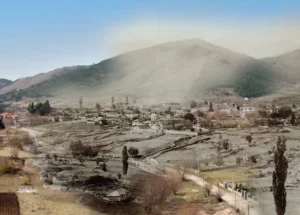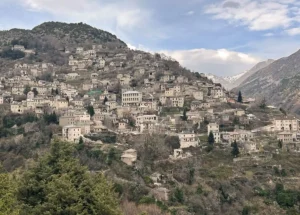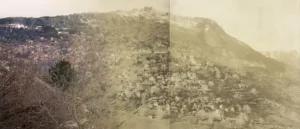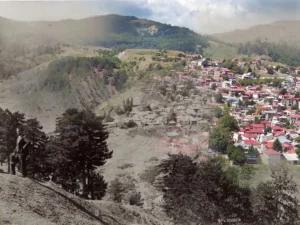“Few, if any, villages in Pindus have a more beautiful situation than Baieasa. The river, already a considerable stream, which is not easy to ford in summer and in winter becomes a raging torrent, divides the village into two parts, joined by a bridge of the usual Turkish type: a high narrow arch with low parapets, so that loaded mules can pass with ease. The houses in the village are usually several stories high and carefully built for defense, with few or no windows on the ground floor. The main part of the village is on the east bank of the river, and the bridge mentioned affords the sole means of access to it. In the small quarter on the west bank stands the church of St. Athanasius, close to the bridgehead, which it serves to guard. The church is built entirely of stone, with a solid domed roof and loopholes.
All the inhabitants are Vlachs, but the men also know Greek. There is both a Greek school and a Romanian one, although the latter was destroyed by a Greek band in 1905 and has not since been rebuilt. The chief trade is in timber, for Baieasa boasts more sawmills than any other Vlach village. The other common Vlach trades of sheep rearing, wool working, and muleteering are also practiced, though not to a great extent, as many of the muleteers employed in carrying Baieasa timber to Yannina are from Samarina. The traditional costume, originally very similar to that of Samarina, has now mostly been replaced by European-style coats and trousers, often à la Franca.”
Alan J.B. Wace and Maurice S. Thompson, The Nomads of the Balkans



